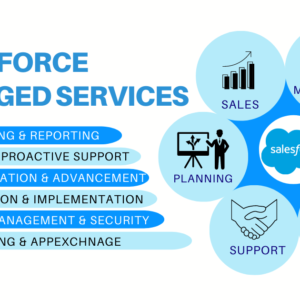The internet era has left businesses with no choice but to be on the digital forefront because there is an opportunity to sell more widely than in the brick-and-mortar space. While it has become extremely important to be on the digital frontier, how you craft the digital experiences for your customers matters the most.
This laid-out customer journey on a platform can’t just be limited to transactional intent; it goes beyond that. Have you been fostering emotional connections in the customer journey for a smooth digital customer experience?
Continue reading on; this article will get you there in a moment.
Crafting an emotional connection
A customer experience can make or break a product, as it all depends on how you depict the brand, how you want your customers to remember you, and ultimately how you connect with them so that they can remember you for what you make your brand to be remembered as.
If it’s an experience that is only transactional, the customer’s chances of being connected to your brand can only be momentary but never long-lasting. To build that lasting one, you need to create such an experience, and here’s how you can start with it.
1. A vision that is centric to the customer and their values
The initiative to provide a memorable experience must be embedded in every level of business operation, not just in one phase of it. How you create value will depend on how the brand value of a company resonates with the value of its customers, which must occur at a personal level. Only then will customers feel you understand what they are looking out for?
2. Personalization that technology can reveal and you can implement
There are plenty of analytics platforms on the market that help you reveal patterns and trends in the data about your target audience. They are enough for you to come to an understanding of how their behavior has been changing and to identify what they might like. These personalizations can be added to your customer experience strategy to get them to stick with you compared to those who aren’t making any personalizations.
3. Storytelling that sets the stage for a genuine connection
When the majority of things are automated, people lose the need to connect to a brand. As you see, there isn’t any story a bot can give to customers, although it is used to make certain operations simpler. A story is a relatable instance where a customer can know what your brand does and these stories must relate to the customer’s value for them to connect in the first place. This story can add a human touch and foster an emotional connection among your target customers.
4. Capture the right metrics to know if you are doing right
Some metrics measure the success of your implementation to exactly tell you whether your strategy worked or not. See beyond the marketing metrics, such as conducting sentiment analysis, tracking the net promotor score, and analyzing the feedback and rating for all the new initiatives you are implementing.
As these metrics are specifically oriented to customer experiences, they can provide a better analogy of how customers perceive your brand at any given point in time and what measures you can take to overcome it.
5. New engagement implementations and correct technological implementations
Personalization comes when you understand your customers well and to know that you need to implement various strategies that could get their attention and help them respond positively to it. These innovations must progressively take place to arrive at an answer to that one solid thing your target audience needs and looks forward to in your brand.
On the other hand, when there are various technologies to set up the customer experience, not every technology helps you establish an emotional connection. Using it can speed up the process but the intervention of human touch is always needed and this must be part of the strategy for the customer experience.
How to view the customer experience process?
An experience takes place over a customer journey and it is a narrative that you create for your customers to experience, which can either be good or bad for them. The responses alone can convey the outcome of your customer experience.
When you are crafting one, you may view it this way to begin with.
1. Transparency as a brand in every bit
Trust is a crucial aspect that a brand wants to build for their customers to rely on. Trust critically comes from transparency, whether in the products and services, pricing, or policies you offer. When you are straight about your stance, customers won’t have second thoughts about making a purchase, but when things are hidden and gimmicked, that’s entirely the wrong way to make a proposition that they don’t associate with.
Once you set the transparency, it’s about giving them an opportunity to raise a concern through mediums like phone, email, and chat support. This access gives them a sense of relaxation that a company is accessible. Many of the brands indulge in overpromising and underdelivering, so you, as a brand, don’t want to be a part of it. Give customers an expectation that is worth relying on so that there is no sort of disappointment
2. Presence of human touch
While there is transparency set in the initial stage if the customer experience is entirely led by a bot and not a human, then it’s the experience that’s wasting the efforts. A connection is about understanding the other individual, which a bot in all instances cannot do.
If you analyze their interest and behavior, you get to recommend products, content, and offers that are personal to each individual, giving the customers the experience that the brand understands what they, as individuals, need.
When that’s said, the customer representative must be empathetic, listen to the customer’s point of view to analyze and arrive at a situation, and again, the customer must feel that you are genuinely concerned about resolving the issue, unlike the bots who are only trained for specific instances.
Building a relationship with your customers goes a long way toward getting them loyal to your brand. Maybe a loyal customer can be rewarded for visiting the brand every time they have a relevant purchase to make.
3. The way the problem is addressed
In the arena where customers face issues, they must always be tackled with a proactive approach to get them to notice your efforts to solve a problem. It must also have reactive support to give the best resolution to the problem.
How the team resolves the issue also matters; they must be motivated enough to give the best solution and keep improving their processes over time. This can be added to educating the customer service agents about all the technicalities of the products involved and the resolutions to them. Also, while giving the information to the customers, use various forms of content to keep them educated.
The Wrap
The activity of corporate social responsibility can also influence how customers connect to your brand. Your actions to impact society socially will lead them to think about how responsible this brand is and can influence a customer to take any action or form an opinion.
An emotional connection is very essential to be developed in the customer journey. It must be carefully planned, assessed, and dealt with, as this is a matter of building a relationship with your customers. It has the potential to build meaningful things for both the company and the customers. Now, will you build the emotional connection or just be transactional?





